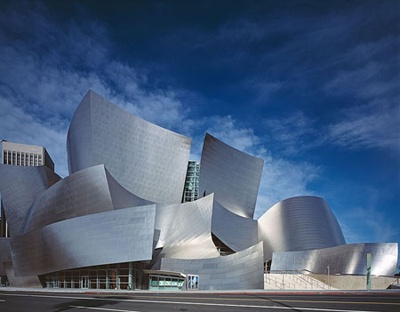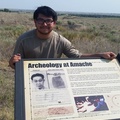Are you familiar with Ludwig van Beethoven’s 9th Symphony? If you think you’re not, listen to a recording by clicking on the YouTube video below and you’ll soon realize that you’ve heard it at some time in your life, even if you’re not fond of classical music. In particular the popular well-known fourth choral movement Ode to Joy is called by many, the “Anthem of Europe.” This is based on a poem by Friedrich Schiller which Beethoven blended parts into his grand symphonic chorale.
* Check YouTube video: http://www.youtube.com/watch?v=6K4635W4roY
Beethoven’s 9th is “the first example of a major composer to use human voices on the same level as instruments in a symphony.” Did it “ring a bell”?
In an email announcement sent to the staff and volunteers at the Japanese American National Museum, Bill Watanabe, Executive Director of the Little Tokyo Service Center, called for volunteers to join a choir to learn and sing the chorus parts for Beethoven’s 9th in a July 10th, 2009 performance at the Disney Hall. This project was also publicized in the Rafu Shimpo’s Japanese and English section. Bill was the first and “only” Japanese American to initially join the Little Tokyo practice group and wanted to encourage others to join.
Hmm, I never thought that I would ever do such a thing, but the reason given for this project was intriguing. The Japan Business Association (JBA), under the leadership of Yasuyoshi Suzuki wanted to foster a better relationship between the Japanese Americans and shin (new) Japanese in America community members and so this project was created. The clincher for me was hearing Bill Watanabe say that like him, I didn’t have to have any choral experience. So I joined. Maybe by example, I could encourage my adult children and grandkids to consider joining and taking part in something they otherwise might not. I know my daughter Lisa has a beautiful voice.
There are three locations for the weekly choir practices. Closest to me was the Japanese American Cultural and Community Center (JACCC) in Little Tokyo. The two other groups meet in Torrance and Orange County, CA. In addition, six rehearsals with the combined three groups are scheduled before the July 10th concert, which will have professional soloists and the Asia America Symphony Orchestra conducted by David Benoit, world-renowned pianist and composer.
I was a bit nervous entering the JACCC practice room for the first time and facing 24 more Fridays to learn to sing in a choir. First, I didn’t know if I would qualify and, second, I was anxious about entering a new social world of two Japanese groups and charged with the goal of mixing to foster a better relationship.
“Konban wa!” (The proper greeting at 6:30pm), was warmly exclaimed by the lovely friendly women who helped register the choir. That helped to reduce my anxieties. Mr. Yasumasa Tanano, who manages this Little Tokyo choir group, set me up with a choral music book and a CD which had the recorded parts for soprano, alto, tenor and the bass to sing along with and practice at home, Karaoke-style. I was totally impressed by how well organized and how much effort was made in designing and executing this awesome undertaking. I learned that renowned community leaders: George and Sakaye Aratani, Paul Terasaki, and Glen Fukushima also provided funding support to make this worthy project possible.
Bill Watanabe, as the head of the Little Tokyo Service Center and an active community leader, has an ideal perspective to view the different cultural layers within the Japanese community. He explained that terms such as: shin (new) Issei or shin Nisei are generally used to identify first and second generation Japanese who immigrated here post-WWII. But, that after living in the United States for some decades they justifiably call themselves Japanese Americans. Japanese national simply means Japanese from Japan and generally applies to those here on termed company (kaisha) assignments.
Bill says that any division among the Japanese cultures is the likely result of a language barrier and why the separate but parallel-worlds exist. Bi-lingual Japanese obviously have a better chance to bridge the gap which is successfully occurring among the choir members. To their credit, the Japanese nationals speak enough English well and are making the effort to mix.
I began to talk with the male singers first since the basses and tenors were seated together. I eventually met some of the women, who sang the alto and soprano parts. I asked all of them about their background, how they came to join the program and their personal feelings about this experience. Let me share what I learned from some of these choir participants:
Yasutaka Kelly Tanaka, from Saga-ken works for Japan Food Corporation. He has been in the United States for 35 years and is now a U.S. citizen. He joined the choir for the challenge much to his own and his family’s surprise, but his wife and two daughters support his involvement.
Masako Nishimoto is a Sansei. She was born in the Gila War Relocation camp in Arizona. She has five children. She does Karaoke and enjoys learning to sing Japanese songs. She enjoys playing the piano. Masako learned about the Beethoven’s 9th choir project from the Rafu Shimpo and is now having a good time learning to sing Ode to Joy in German.
Nao Magami, from Tokyo, has been in the United States for 32 years. He was inspired by and wanted to vote for Barrack Obama and so became a U.S. citizen in 2008. He is self-employed and heads a marketing firm. He and his wife, Mariko have a daughter with disabilities. In 1994, Mariko founded Japanese Speaking Parents Association of Children with Challenges. Nao is a guitarist and belongs to a jazz band. He had sung in two other choir groups and joined this Beethoven project because he enjoys singing and for the challenge this choral piece offered.
Sum Anna Kim speaks fluent Japanese and has worked at the Little Tokyo Service Center (LTSC) for over 20 years. In fact, it was her LTSC boss, Bill Watanabe, who talked her into joining the choir. She sings in an Episcopal Church choir. She says she sings alto and is having fun.
Reo Yoshitani was born in Tokyo and came to America when he was 14. He read about the Beethoven 9th project in the Rafu Shimpo and joined because he thought it would be fun. He said, “My wife thinks I’m nuts after she saw and heard me singing, accompanied by the CD player in my car in the garage.” He also said, “My kids and grandkids think its great that I’m learning to sing a song in German.”
Atsuko (Tsuchiya) Donley was born and raised on the beautiful island of Sado. Atsuko has been in the U.S. for eight years and has two daughters who are as happy as she is for joining the choir. She had sung in a high school choir before and joined this program when her close friend, Sum Anna talked her into it. They are having a ball.
Jerry Kamei, DDS, a Sansei with a practice in the San Fernando Valley, is married and has three children. As a recreational jazz musician he was always tempted to sing, so when he found out about this project in the Rafu Shimpo, he jumped in. He is a member of a band and they play wherever they can get a gig. Recently, they played at the Santa Monica Farmer’s Market. He also volunteers his time to conduct a community choir and teaches music. Jerry knew about David Benoit and said that that was another strong motivation for his joining.
Yumi Hoshi has lived in Los Angeles for seven years with her husband, who is an expatriate of a Japanese company, the NYK Line. They have two sons. Yumi became very interested in Japanese American history and how they managed to survive the difficult war years and succeed in America. She is very pleased to have joined the JBA sponsored choir project and was pleasantly surprised to learn that Aiko Sakazaki was the choir director. Aiko, it turned out, is the daughter of friends who live in the same condominium. Yumi knew Aiko since she was a baby and thinks that Aiko is “like a bridge between Japanese and Japanese Americans.”
Yoshi Katayama, whose mother and stepfather, are Kibei, was born in Manchuria, where his biological father died as a soldier. Subsequently, he lived in Japan until they returned to the U.S. Yoshi has sung in a church choir during high school and joined the choir after his wife encouragingly pointed out an article in the Lighthouse Magazine. Yoshi says of this project, “Hopefully, this experience will enable me to get to know and bridge the gap between the layers of different Japanese.”
As you can see, we all seem to share the same feelings about why we joined this choir project. Challenge, enjoyment, fun, hope and family are the common key words. I find that part of the lyrics from Ode to Joy, “alle menschen verden bruder”—“all mankind are brothers” perfectly represents the goal of the choir project.
Thanks to the gifted and talented Aiko Sakazaki, our Little Tokyo choir director and Dr. Hiroshi Taguchi, pianist, both of whom patiently and with pleasant humor made our lessons very enjoyable, we will reach our goal!
We who are new to choir singing, recently learned that Beethoven’s 9th Symphony is hugely popular in Japan and is sung annually by many choirs throughout Tokyo mainly in December. It is considered a spiritual necessity to sing the Ode to Joy chorale to end the year on a positive note! There’s one exception: a choir of 5,000 Japanese citizens from all walks of life, children to seniors, gather to celebrate the new year by singing the Ode. An die Freude just might become known as the “Anthem of Japan”! (http://web-japan.org/trends00/honbun/tj000113.html)
Beside enjoying the camaraderie while learning to sing Ode to Joy in German, we now know how to respond if someone asks: “How do you get to Disney Hall?” We’ll answer, “Practice, practice, practice!”
© 2009 Gary Ono


















